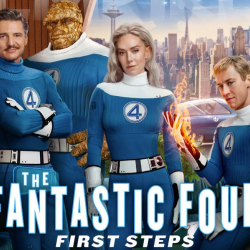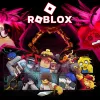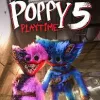If Marvel Studios ever needed to prove that reinvention and reverence can walk hand in hand, The Fantastic Four: First Steps stands as a masterful testament. This isn’t just another origin story—Matt Shakman and his creative team propel Marvel’s First Family into uncharted territory, combining a lush retro-future vision with emotional precision unprecedented in the crowded landscape of superhero films. The result is both a love letter to the comic roots and a statement of bold new intent that finally gives the franchise a film worthy of its legendary title.
A Visionary 1960s That Never Was
Step inside this parallel-age New York, and you’ll see a world that feels both nostalgic and shockingly original. Here, the Baxter Building rises as a monument to progress, its silhouette gleaming amid a skyline thrumming with aircars, cheerful robots, and neon-lit optimism. The city is alive with an energy reminiscent of the golden-era science expos, yet the threat of the unknown hovers just out of sight. Shakman and his artists create an atmosphere that transcends homage: the past’s dreams of the future are finally on dazzling display.
From the streets to the labs, every prop and costume is a meticulous hybrid—mid-century chic colliding with advanced tech, immersing the viewer in a world where scientific celebrity and civic devotion walk side by side. The tone is hopeful, but never naïve. This is a society that believes in the impossible not because it’s easy, but because it’s necessary.
The Family at the Core
Rather than belaboring their formation, the film introduces the Fantastic Four as an already established, wildly famous team. Pedro Pascal’s Reed Richards is a marvel of nerves, insight, and the ever-present dread that every breakthrough brings new danger. Pascal finds the heartbreak in perpetual responsibility, whether facing cosmic threats or the intimate fear of parenthood.
Vanessa Kirby’s Sue Storm is equally compelling—her portrayal incorporates the best elements from every incarnation, but grounds the character in sharp wit, diplomatic shrewdness, and genuine warmth. Ebon Moss-Bachrach turns Ben Grimm into the most humane and surprising Thing yet, his rocky façade cracking for subtle expressions of longing, loyalty, and self-doubt.
If there’s a dark horse, it’s Joseph Quinn’s Johnny Storm—a showman whose bravado hides insecurity and a need for connection. He isn’t just the brash hotshot; he’s the younger sibling whose journey towards self-respect shapes many of the movie’s most affecting moments. Together, the quartet’s interplay feels unscripted and volatile: affectionate teasing, honest arguments, and the unspoken solidarity of those who truly believe the world is watching.
Galactus and Silver Surfer: Beyond the Usual Villainy
Galactus, brought to imposing life by Ralph Ineson, is something new—less tyrant than cosmic inevitability, rendered with a gravitas that’s as contemplative as it is terrifying. Julia Garner’s Shalla-Bal as Silver Surfer, meanwhile, is a spectral force of mystery and melancholy, signaling a fresh, nuanced take on the herald’s tragic duty. Theirs is a dynamic built not just on threat, but a kind of mournful detachment; even the planetary peril has moments of unexpected stillness and poetry.
What distinguishes First Steps is how it collapses the cosmic and personal. The anxieties of Reed and Sue as soon-to-be parents, Ben’s struggle for normalcy, and Johnny’s volatile need for meaning are never dwarfed by the spectacle. Instead, the film frames every battle and twist through the lens of what these characters have to lose—and why, despite everything, they still choose to fight.
Sensory Detail and Innovative Craft
Shakman’s film is a feast for the senses. Jess Hall’s cinematography shimmers—light and shadow evoke both mid-century cinema and the dreamlike instability of a world teetering on change. Whether in the sweeping grandeur of Excelsior’s launch or the intimate shadows of team discussions, every frame is composed for both drama and immersion.
Michael Giacchino’s score dances between lush orchestral rhapsodies and subtle retro synths, threading hope and tension into each new challenge. The production team leans sharply into practical effects, grounding cosmic flights and Negative Zone voyages in material reality. Even H.E.R.B.I.E., crafted with a mix of puppetry and inventive CG, is a scene-stealing delight.
Final Take
The Fantastic Four: First Steps is more than another Marvel adventure—it’s a bold declaration that mainstream superhero films can be as experimental and heartfelt as they are grand. By fusing nostalgia with invention and cosmic drama with honest family stakes, it achieves what so few blockbusters manage: a genuine sense of wonder and invention. Watch, stream, or download it online, and you’ll meet a Fantastic Four that feels visionary all over again—ready to lead the MCU in spirit, style, and soul.
How to watch The Fantastic Four: First Steps online
After opening in theaters on July 25, 2025, The Fantastic Four: First Steps will head to Disney+ for streaming (with download options included), and will also be available for rent or digital purchase via Amazon Prime Video and Apple TV, supporting streaming and offline access. It may later join Hulu or Peacock’s catalog, depending on windowing deals. The film holds a PG-13 US age rating due to sci-fi action and thematic depth; as with new releases, free or unblocked access will be delayed after launch.
Pros
- World-building that marries style, substance, and story with immersive flair
- Core team performances are nuanced, deeply felt, and frequently surprising
- Galactus and Silver Surfer offer layered, emotionally potent antagonism
- Practical effects and vibrant set design complement innovative cinematography
- Sharp script deftly blends humor, existential drama, and relatable stakes
- Score enhances every emotional note—never overpowering but always present
- Focus on found family, hope, and resilience over formulaic good vs. evil beats
- Confident pacing that privileges character development and emotional payoffs
Cons
- Some MCU die-hards may chafe at minimal franchise cameos or connective tissue
- Secondary storylines (like the Future Foundation’s politics) are underplayed
- Reflective mid-sections may slow momentum for those craving nonstop action
- Stylized alternate universe may be disorienting for newcomers to the team
Screenshots
To download the app, you will get links to the Official Website and/or official digital markets.











